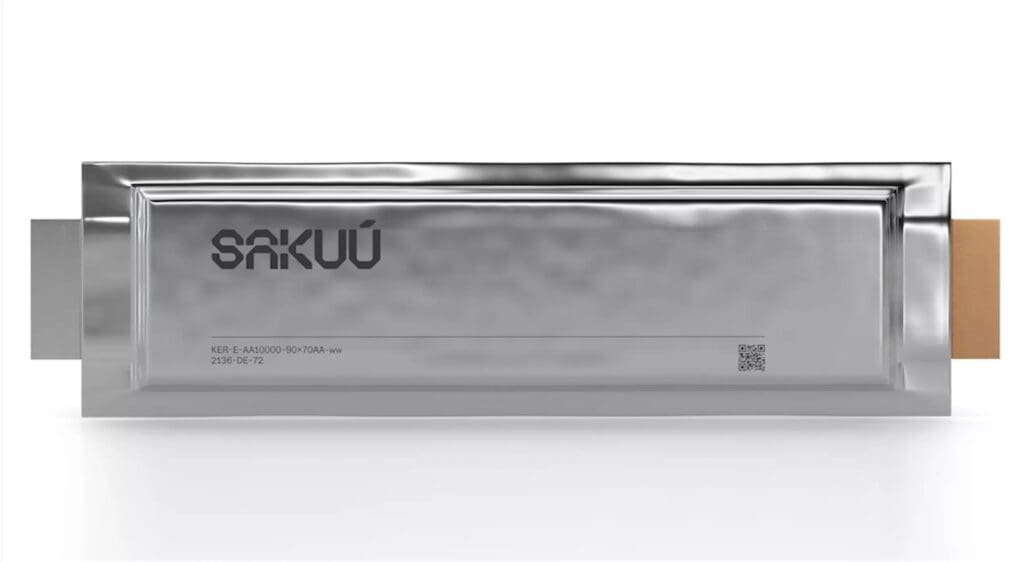Would you like to get notifications from Christian?
3D printing has been growing at an unprecedented rate in recent years, with its impact felt across various industries. One of the latest developments in 3D printing technology is the printing of batteries, which is set to disrupt the battery manufacturing industry in a significant way.
Sakuu Corporation, a California-based battery technology company, recently announced the successful 3D printing of fully functional batteries in custom shapes and sizes using its Kavian platform. This achievement is a significant step towards commercial-scale production of next-generation SwiftPrint batteries, including solid-state batteries.

Traditionally, battery manufacturing has been a complex and expensive process. The materials used are often toxic and require costly safety measures to handle and store, and the manufacturing process is energy-intensive. Additionally, the process is limited to producing batteries in standard shapes and sizes, making it challenging to integrate them into products requiring custom shapes and sizes. However, 3D printing of batteries changes this narrative and makes producing custom-shaped batteries a reality.
Sakuu's Kavian platform has overcome the challenges associated with traditional battery manufacturing and offers several benefits. The company's printing process, which starts with raw material and ends with a ready-to-use patterned battery, creates a new paradigm in manufacturing and energy storage. The process enables more effective use of battery cell volume with new pathways in dynamic thermal regulation. This allows for integrating fixturing, sensors, and thermal transport pathways through the patterned design, especially when thin sub-cell battery structures are stacked with identical patterned openings for thermal management in alignment.

Moreover, 3D printing of batteries can lead to substantial gains in energy density, as the battery can become part of product design via customized shapes and sizes. This new approach could transform how future batteries are manufactured for all industries, allowing for producing batteries in non-standard shapes and sizes for specific products.
The potential of this technology is enormous and has far-reaching implications for various industries. For instance, the automotive industry could benefit from the 3D printing of batteries as it could produce custom-shaped batteries that better fit electric vehicle designs, resulting in longer ranges, faster charging, and more efficient battery performance. Additionally, the healthcare industry could use this technology to create custom batteries for medical devices, such as pacemakers, that require small, specific shapes.

In conclusion, the development of 3D printing of batteries is set to revolutionize the battery manufacturing industry. Sakuu's successful 3D printing of fully functional batteries in custom shapes and sizes marks a critical step towards commercial-scale production of next-generation SwiftPrint batteries, including solid-state batteries. The technology's potential benefits are vast, including gains in energy density, better thermal regulation, and custom-shaped batteries that fit specific products' designs. As more research and development in this area continues, it is expected that more industries will adopt this technology and enjoy the benefits of customized battery shapes and sizes.
Author: Christian Kromme
First Appeared On: Disruptive Inspiration Daily
Christian is a futurist and trendwatcher who speaks about the impact of exponential technologies like AI on organizations, people, and talents. Christian tailors his presentations to your audience's specific industries and needs.



Our world is changing at an exponential rate! A big tidal wave of digital transformation and disruption is coming at us fast. Many organizations see this wave as a threat and experience stress, but there are also organizations that just see this wave as an opportunity.

Imagine sitting with just 10-15 fellow executives at a premier location, gaining clarity on the impact of AI on your industry while enjoying an exquisite dining experience. These are not just meetings—they are transformative moments that will shape the future of your organization



In the future, 3D printing and generative design will allow for products to be designed in a more decentralized manner, and production will take place closer to the customer and fully on-demand. 3D printing technology will also allow for more customization and personalization of products.


The agricultural industry is ripe for disruption. Robotics, AI, and IoT are all technologies that have the potential to radically transform the way we grow food. In combination with vertical farming, these technologies could increase the efficiency and quality of agricultural products.

A human-centered society is one that puts people first and where technology is used to unite and empower people. It is a society that values biological life and dignity above all else. It is a society that recognizes the importance of human relationships and works to strengthen them. In a human-centered society, all members of the community are valued and treated with respect.


The future of healthcare is here. New technologies like AI, IoT, big data, and smart sensors make it possible to become the CEO of your own health. Imagine that your phone can listen to your voice and AI algorithms can detect small nuances in the tone of your voice that indicate specific diseases.
